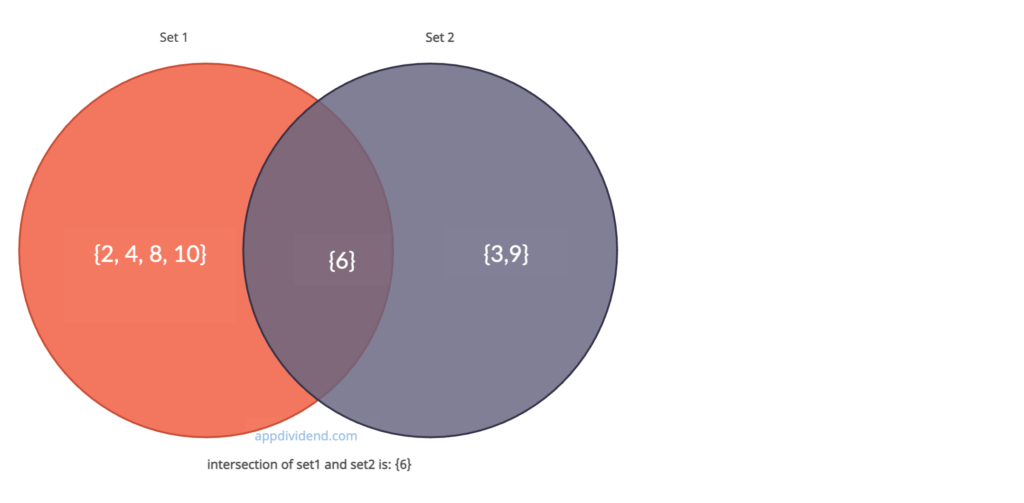Python set intersection() method returns a new set containing the elements that are common to two or more sets.
This method does not modify the original set.
Syntax
set.intersection(set1,set2,set3...)
Parameters
set1(required): The first set to be intersected.
set2,set3..(optional): Two or more additional sets to be intersected with the set1.
Return Value
This method returns a new set containing only the elements that are present in all the specified sets.
Visual Representation
Example 1: How to Use intersection() Method
# Even nums between 2 and 10
set1 = {2, 4, 6, 8, 10}
# Multiple of 3 between 1 to 10
set2 = {3, 6, 9}
# priting both the sets
print("Set1 is: ", set1)
print("Set2 is : ", set2)
# Now we will find intersection of these two sets
print("intersection of set1 and set2 is: ", set1.intersection(set2))Output
Set1 is: {2, 4, 6, 8, 10}
Set2 is : {9, 3, 6}
intersection of set1 and set2 is: {6}
Example 2: Working with multiple sets
set1 = {2, 4, 6, 8, 10}
set2 = {3, 6, 9}
set3 = {2, 3, 5, 7}
set4 = {1, 3, 5, 7, 9}
print("intersection of set1 and set2 is: ", set1.intersection(set2))
print("intersection of set3 and set4 is: ", set3.intersection(set4))
print("intersection of set2 and set3 is: ", set2.intersection(set3))
print("intersection of set2 and set3,set4 is: ", set2.intersection(set3, set4))
print("intersection of set1 and set2,set3,set4 is: ",
set1.intersection(set2, set3, set4))Output
intersection of set1 and set2 is: {6}
intersection of set3 and set4 is: {3, 5, 7}
intersection of set2 and set3 is: {3}
intersection of set2 and set3,set4 is: {3}
intersection of set1 and set2,set3,set4 is: set()Example 3: Set Intersection Using & operator
set1 = {2, 4, 6, 10, 12}
set2 = {3, 6, 8, 10}
set3 = {2, 6, 8}
print(set1 & set2)
print(set2 & set3)
print(set1 & set2 & set3)Output
{10, 6}
{8, 6}
{6}
Example 4: TypeError: unsupported operand type(s) for &: ‘set’ and ‘list’
app = {11, 12, 13}
dividend = [21, 31, 41]
num = app & dividend
print(num)
Output
TypeError: unsupported operand type(s) for &: 'set' and 'list'


